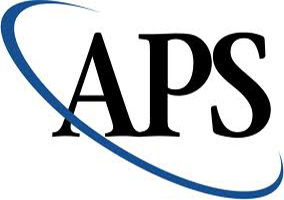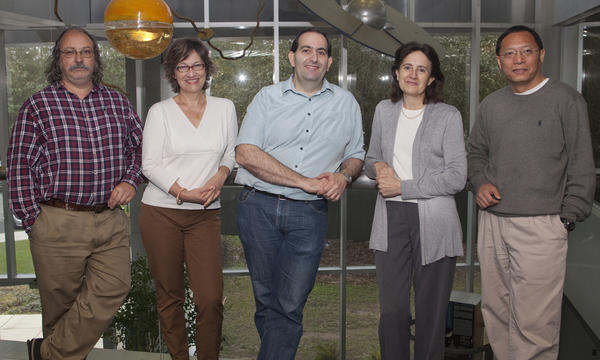
Florida State University’s stellar reputation for high quality scientific research across numerous disciplines was confirmed when six researchers were elected as fellows of the American Physical Society (APS).
The American Physical Society is the nation’s largest and most prestigious professional society dedicated to the advancement of physics research and knowledge. Election to fellowship in the 50,000-member society is limited to no more than one-half of 1 percent of the society’s membership and is a significant recognition by a scientist’s peers of his or her outstanding contributions to physics.
“Those of us who have spent any time with these outstanding FSU programs are not surprised that six of our colleagues would be selected in a single year,” said Vice President for Research Gary Ostrander. “This is another tangible example of the continued upward trajectory of ourresearch efforts at Florida State.”
Florida State tied for second in the nation for the number of APS fellows elected for 2012. The university was outpaced only by the massive Los Alamos National Laboratory, which produced 10 new fellows, and tied with research powerhouses Harvard, the Massachusetts Institute of Technology and the University of California Davis.
The APS fellows and the language provided on their citations are:
- Rufina G. Alamo, a professor of chemical engineering in the Florida A&M University-Florida State University College of Engineering and frequent MagLab researcher, “for her use of well-characterized materials and performance of carefully designed experiments to address structure-property relationships in polyolefins.”
- Luis Balicas, a MagLab scholar/scientist, “for experimental studies of unconventional superconductors, heavy fermion materials, and frustrated magnetic systems.”
- Paul Cottle, the Steve Edwards Professor of Physics in the Department of Physics, “for the impact of his efforts to improve university physics education, especially for precollege teachers, and his advocacy for effective precollege science education standards and policy in Florida and nationally.”
- Peter Hoeflich, a professor of physics, “for outstanding contributions to stellar evolution, radiation hydrodynamics, and nuclear astrophysics, especially in the context of modeling the light curves and spectral evolution of supernova explosions.”
- Dragana Popovic, a MagLab scholar/scientist, “for experimental studies of glassy behavior in strongly correlated systems near the metal-insulator transition.”
- Peng Xiong, a professor of physics, “for contributions to the understanding of magnetotransport in nanostructured superconductors, ferromagnets, and their hybrids.”

Florida State’s American Physical Society fellows for 2013 are, from left, Peter Hoeflich, Dragana Popovic, Luis Balicas, Rufina G. Alamo and Peng Xiong. Paul Cottle is not pictured.
“This year’s APS bounty is a remarkable achievement and one that the entire institution can celebrate,” said Sam Huckaba, dean of the College of Arts and Sciences. “It is representative of FSU’s breadth and excellence in the physical sciences.”
MagLab Director Greg Boebinger agreed.
“The single most important hallmark of an excellent research institution is the collective of its talent, the community of its researchers,” Boebinger said. “This award recognizes individual expertise and accomplishment, of course, but having so many awardees in a single year is an extra recognition of Florida State University’s growing stature as a research institution.”
While the six researchers all received the same recognition as fellows, the nature of their research is actually quite varied.
Alamo, for example, works with “polyolefins,” large plastic molecules that are able to assume a wide variety of shapes. Polyofelins are used almost everywhere, with two specific types — polyethylene and polypropylene — accounting for about 80 percent of the total worldwide production of plastics. Because they are so easy to fabricate into a wide variety of useful products, such as film wraps, greenhouses, automobile parts, hospital gowns and even carpeting, polyolefins have an ever-increasing list of potential uses. Alamo studies how these molecules “fold” to understand the performance of polyolefin materials — research that could lead to new and innovative applications.
At the MagLab, Balicas studies novel materials with special properties — in his case, superconductivity and magnetism.
“A growing number of new materials exhibit superconductivity, which is a state observed in metallic systems that allows electrical currents to flow through them without the loss of energy,” Balicas said. “It has enormous potential for technological applications, but in these materials the properties of the superconducting state are quite different from our ‘standard theory’ for superconductivity. My research focuses on unveiling these properties with the hope of increasing our current understanding of this phenomenon.”
Balicas’ group also works to identify new materials with unique magnetic and electronic properties that can be used to create powerful magnets. Magnets of wide technological use are usually composed of rare-earth elements such as neodymium or samarium. By developing synthetic versions of these elements, future magnets can be more powerful and cheaper to build. He is also undertaking a program in nanotechnology based on single atomic layers of “exfoliable,” or fire-resistant, materials that could revolutionize the future of electronics.
Another MagLab researcher, Popovic, studies how various types of composite materials possessing unique properties conduct electricity — knowledge that is crucial for the development of future technologies.
“The electrical transport properties of many ‘novel’ materials can be changed dramatically by adding even a small number of electrons,” Popovic said. “Understanding and control of the electron motion may help us to develop materials with such applications as more efficient energy transmission and faster computer speeds.”
In Florida State’s Department of Physics, Xiong conducts research on superconductors and ferromagnets — what he calls “two of the most venerable classes of materials in solid-state physics.
“Understanding how these materials behave at the nanoscale level and when they are put together is not only interesting at the fundamental level but also relevant for a broad range of practical applications,” Xiong said.
While most of the new APS fellows study matter at its most basic level, another one looks at the bigger — much bigger — picture. Hoeflich, an astrophysicist, seeks to understand one of the great mysteries of the universe — the presence of so-called “dark energy.”
“One of the most stunning discoveries of the past decade was the realization that the universe is undergoing an accelerated expansion and that a new form of energy that comprises 70 percent of the energy budget of the universe — dark energy — is pushing the universe apart,” Hoeflich said. “This is unlike ordinary matter as we know it, which tends to ‘clump’ due to gravitational attraction. This discovery has triggered a new quest to understand the enigmatic nature of dark energy, which may be probed by measuring how it evolves with time or, equivalently, by observing objects so remote that it takes light billions of years to reach the Earth.”
Cottle has conducted groundbreaking scientific research on exotic nuclei for more than a quarter-century. However, his APS recognition comes for his efforts to promote the increasing importance of STEM (science, technology, engineering and mathematics) subjects in K-12 and college curricula.
“Science and engineering careers offer some of the best opportunities for economic security our kids have now,” Cottle said. “And physics courses at both the high school and college levels are the gateways into these fields. We owe it to our students to give them great opportunities to learnand understand physics so that they have the best possible chancesto succeed in this new economy.”
###



